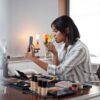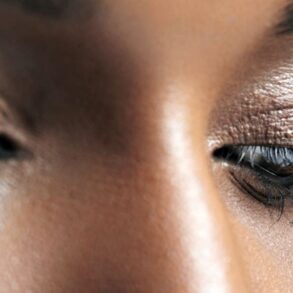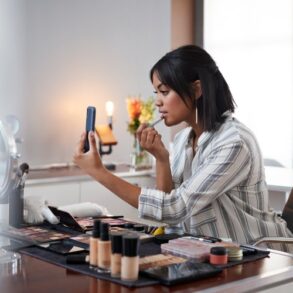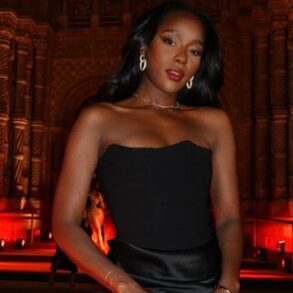The Panelists
Teresa Lopez, general manager, Pureology, Mizani & L’Oréal Technique at L’Oréal USA
Teresa Lopez is the general manager of Pureology, Mizani and L’Oréal Technique at L’Oréal USA. She is born of Cuban exiles.
Agnes Landau, chief marketing officer, Shiseido Americas
Agnes Landau serves as the chief marketing officer of Shiseido Americas, a role she took on after almost a decade at the Estée Lauder Cos. She is from Puerto Rico.
Michelle Freyre, global brand president, Clinique
The global brand president of Clinique, Michelle Freyre has held various stints at Lauder. She is Puerto Rican and Cuban.
Marcela Melero, vice president, global Dove skin cleansing, Unilever
The leader of Dove’s global skin cleansing business has held various international roles at Unilever, where she started in her native country of Argentina.
Maria Salcedo, senior vice president, merchandising, Ulta Beauty
Born in Colombia, Maria Salcedo has risen through the merchandising ranks of Ulta Beauty, having previously overseen color cosmetics prior to her current position.
Put five Latina beauty executives in a room and you’ll get beauty recommendations from childhood, a volley of anecdotes oscillating from English to Spanish to Spanglish and an instant camaraderie.
That’s what Beauty Inc did earlier this fall to dive into the nuances and opportunities that comprise the Hispanic or Latino population — among the most diverse and fastest-growing in the U.S. Statistics bear out the opportunity — currently accounting for about 19 percent of the overall population, Hispanics will account for 53 percent of the U.S. population growth in the next five years.
Much like the powerhouses who make up this panel, they’re obsessed with beauty, starting from a young age, and overindex on spending in the category. NielsenIQ reports that the cohort overall will have an estimated $2.4 trillion in buying power in 2024, an 87 percent increase over the last 10 years and larger than Canada’s economy. And a good chunk of that money goes to beauty and personal care, where the average spend is $905 annually, versus $753 for non-Hispanic shoppers.
Despite the clear market opportunity, though, Latinos are largely underrepresented in the corridors of power in beauty, and the diversity of the cohort is often ignored by marketers. Beauty Inc gathered leading Latina executives together to discuss how the industry can better serve a demographic that continues to grow in size and importance. Here, their conversation, edited and condensed for clarity.
Hispanic Americans make up about 20 percent of the population, the average age is 42, and 47 percent of the cohort is Millennials. Why is this cohort so underrepresented in the beauty industry?
Agnes Landau: From a consumer standpoint, it is highly represented. You have a heavy involvement in beauty. Almost 18 percent of sales are coming from the Latino customer base, growing at a 13 to 15 percent rate, faster than the average basket of the typical consumer. From a category standpoint, we are heavily involved in beauty, particularly in hair care, and also driving a lot of the growth in fragrance.
Marcela Melero: Beauty is passed from one generation to the other in our culture. There’s also a situation where we say it’s one cohort, but it’s not. We’re all Latino, but we’re not the same, and that’s important. We’re super involved in beauty, but there’s a struggle from the industry on how to deliver and cater to our cohort.
Michelle Freyre: There are cultural nuances based on country of origin, whether you were born in the U.S. or not, which generation you are. We’re underrepresented within beauty industry leadership. We don’t have people around the table in marketing and creative to truly understand the culture and the nuances — the language, the needs, the different skin tones.
Teresa Lopez: It’s a journey, but it’s about representation at the table. That doesn’t mean one person speaking on behalf of the community, it’s having several people at the table who have a different point of view and something to offer. Last year was the first time I had even heard the acknowledgement that we’re as diverse as we are.
Maria Salcedo: The underrepresentation comes from the lack of offering that meets all these varied needs, and there are opportunities for improvement in representation across all of the functions that Michelle mentioned within the industry, leadership as well. This pool of consumers over-indexes in consumption, and are the future of the category in terms of age, consumption, the growing equity, acquisitive power. This is the future of beauty.
Michelle Freyre: One piece that isn’t talked about enough is, beyond all those numbers, our impact on shaping culture. When you look back, whether it’s music, fashion, food — Hispanics have had such an impact and continue to influence where the overall culture in the country goes. Companies don’t fully understand that.
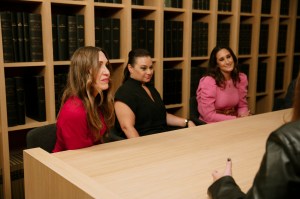
Michelle Freyre, Teresa Lopez, and Maria Salcedo
Cheril Sanchez/WWD
How do you address that diversity of appearance and culture effectively?
Agnes Landau: It starts with having representation and authenticity, and it comes also with understanding the consumer who you’re going after. The Latina in Florida is very different from in California. You need to understand who it is that you’re going after, what that consumer wants, what is the culture, what are the insights and what are the looks. Then, you can speak her language and show her that you also represent her.
Teresa Lopez: You have to do the work. All the geographical studies and considerations that are done for the mainstream need to be replicated for this group. It’s that big and that varied.
Michelle Freyre: We have to have products that address the needs. You have to go deep. You can’t just stay at the superficial, generic, Hispanic, one-size-fits-all level. People who have darker skin tones may suffer from manchas [spots, blemishes], to take an example. But if you’re a fair Latina like me, you may suffer from redness. Consumers are super smart, and Hispanic consumers see through when brands are just talking to them in a generic way. It comes across as not authentic and not understanding.
Marcela Melero: For what we’ve just been describing, the word “lazy” comes to mind. It’s much more about embedding yourself in the community, what are those real insights, how have they evolved through generations. It’s going from “lazy” to really going deep and doing the work and living it.
Maria Salcedo: In our cultures, the connection to beauty starts young, and it’s passed through the mother through generations. That’s a broad commonality. It comes from a place, the word in Spanish is “vanidosa.” In English, it’s “vanity.” In Spanish, that word doesn’t have a negative connotation — it’s self care, self pride. You want to be “vanidosa,” to take care of yourself.
Agnes Landau: If you ask each of us, we would have a different beauty hack from our mothers. Mine is getting a pot of hot water and leaning over it with a towel over your head. The steam is great for a cold, but it also opens your pores and whatever you put on after absorbs better.
Marcela Melero: Mine is to put on lipstick the night before. It’s a mess with pillows and towels, but it leaves a base tint of lasting color.
Michelle Freyre: The sun was really harsh growing up in Puerto Rico. No one knew about the effects of sun and aging, but after a bad sunburn at age 20, my mother saw one wrinkle and said that was it. She drove me to school with a magazine on the side of her face facing the sun. There is this intuition for beauty and for taking care of yourself that is very instinctual — not data-driven, very gut instinct.
Teresa Lopez: My grandmother taught me to walk around the house with my eyes closed, putting on lipstick, in case I ever went blind.
Maria Salcedo: I have a ton of hacks. One was how to curl my eyelashes with a spoon. For a long time, I would have a small dessert spoon in my makeup bag.
What products and categories are most resonant and why? How are the needs and aspirations different to other sets of consumers?
Maria Salcedo: The consumption is so broad. One that is very significant is fragrance. Having multiple fragrances, spraying more than once per day, wardrobing it — as soon as my kids were born I would rub Johnson’s Baby Cologne on them. Everybody has to smell good.
Teresa Lopez: I did the same with my children! The thing about fragrance is that it’s an expression of hygiene. In terms of involvement, it is every category. The only category we might be rivaled in is hair, by the Black consumer — their involvement is another level entirely.
Agnes Landau: I would say high involvement in lipstick. When I started in beauty, I didn’t understand why there was such a mystique around red lips and how to wear red. Just wear it! We have a confidence. Latinas don’t feel there is a color they can’t wear. It is pride also in how you show yourself, and makeup is super high involvement.
Marcela Melero: I would have said fragrance. Another hack of my mom — put Vaseline on your wrist under your fragrance so it lasts longer. At Dove, there are specific variants that have stronger smells that are typically much bigger in the Latino community. The salon at-home, too, whatever tools can give you the look of the hair salon at home, and things that prolong that facial you just had. All of that is very big within the community.
Michelle Freyre: Skin care is backed by the data. They use more products in their regimen and use them significantly more often. It’s some of those beauty hacks that we’re talking about, even at home. I have a great aunt who’s 99 and still asking me to send her skin care. She’s still using her creams in the morning! The skin care piece is as a canvas to makeup, and how you’re going to show up, addressing concerns like manchas, which is a very specific concern.
Maria Salcedo: In Colombia, everyone puts on body lotion every single day right after they shower. The evolution of body care has huge potential that will be tapped into by Hispanics and Latinos.
Marcela Melero: If you look at Mexico, that’s where we sell some of the biggest pots of creams, like Pond’s creams. It has to do with skin, but goes back to the needs of each country.
Teresa Lopez: It’s a source of pride, because it’s almost a representation of your family. And now, of your success. If you present yourself a certain way to the world, nobody needs to know what’s behind it. What you’re showing everyone is a source of pride.
Where do you see the opportunities, and how can the mainstream beauty market more effectively capitalize on and cater to these desires?
Maria Salcedo: It’s about understanding these nuances and identifying where the needs have not been met. Afro-Latina hair is very different than Black American hair, et cetera. When we go into market size, it’s not going to be one big bang. It’s like a string of pearls, all of them together. If you cater to those specifically in Texas or Florida, or Afro-Latinos, they are all going to drive your consumption. There are certain categories primed for growth, like body care, active body care, cellulite treatments, firming — all of that is huge.
Agnes Landau: There is also the loyalty of the prize. Because if you are able to talk to that audience with authenticity, and to offer product that is for them, these people keep coming back to you and you build within that audience. That’s the loyalty piece that in our industry is so important. It’s so fickle, but it’s multigenerational.
It’s not just brands, it’s retail, too. What can and should retailers do differently?
Maria Salcedo: It has to start first with representation at the associate level. The store associates are critical in the interaction that happens in-store, in that consultation. All of our guests are looking for that consultation, but Hispanics and Latinos have an even higher desire to engage in that source of education and guidance. Building an associate base that represents the population that they serve, and being very deliberate about that, would be number one. Then, the curation of the assortment. For example, for stores in certain areas, localization has to be part of the curation of the products.
Marcela Melero: When you go to stores, you see a lot of curation based on other cohorts, but there’s not so much curation based on Hispanics. We started by saying it’s not one cohort. The other aspect is language. It’s different according to generations, but language is one thing that could help in the navigation.
Michelle Freyre: Language gets to the heart. It gets to the connection. It’s one more way to signify that I get you and I’m talking to you. Even if people are predominantly speaking in English during the day, they maybe grew up with parents and grandparents who were speaking Spanish. It’s still the language in your heart.
Marcela Melero: There’s this saying, “We speak in English, we live in Spanglish, and we feel in Spanish.” You hear the word “manchas,” and you know that’s a product for you.
Do any of you feel you’ve had a higher hurdle to overcome because of your ethnicity or gender?
Michelle Freyre: As evidenced by how many women are CEOs of Fortune 500 companies, we still have some work to do, and we’re still experiencing hurdles. Personally, because of my skin tone and my hair, people don’t necessarily know that I am Hispanic. It didn’t necessarily get in the way, but it did get in the way of me in my 20s and 30s showing up as my most authentic self. I was trying to conform to corporate America and not wear the red lipstick, not wear the dress — instead, I’d wear a pantsuit — and not wear big earrings. I was told in a presentation class that I spoke with my hands too much.
I started realizing that my superpower was being my authentic Latina leader, because I lead with my heart. I lead with passion for my people, for the brands I represent and love. When I present with my hands, I show up as my full, competent Latina self with the earrings and the dress and the red lipstick. I’m trying to create an environment where I’m creating shortcuts so people can show up as their authentic selves today, and I try to role-model that.
Agnes Landau: I was told to turn down my accent, which is impossible. It’s there, it is what it is, I can’t take it off. The hands thing is actually impossible. To your point, it was freeing the day I decided this is who I am. And honestly, when you speak with an accent, people listen more carefully, and find it charming. It is totally a superpower. It’s what we must do as leaders now, being where we are, bringing that generation up and making sure that they feel authentic in doing what they’re doing.
The other piece is having mentors, being able to have your own posse, your own crew where you can have these conversations in a very authentic way. Didn’t you feel so lonely coming up in the industry? Find those people who are like you and struggling with the same things because you can really help each other.
Marcela Melero: When I arrived here 18 years ago, I was like, “OK, I need to change to fit in.” Nobody was asking that from me, but you start seeing who’s around you and you try to behave like them. Suddenly, I realized it was so draining. All my energy was going into that, not into the work. It’s not sustainable. So I was stopped. And then people would say, “Oh, you’re so warm.” This is me. It was so liberating. The best is other people at work who are Hispanic saying, “It’s so great that you are out there, talking with your hands, hugging people,” even when I’m being loud with my accent. By having positive role models, you learn it’s OK to have differences.
Maria Salcedo: The accent can also be a hurdle because you don’t want people to just focus on that. Once, I was presenting in front of a very large audience and somebody very senior came to me and said it was great, and it was the first time they’d ever had someone present with an accent. And I was like, “wait, you don’t want to talk about the content or the messages I just delivered?” The focus was on the accent. In terms of representation, that’s where the value is taken away.
One time, I presented a brand that we were launching and I couldn’t pronounce the name in English, and three sales associates came to me and said, “This is the best thing, that you showed your accent.” It was so impactful, representation does matter.
Michelle Freyre: It makes you believe in yourself. When you look up and you see people like you, you have more faith.
Teresa Lopez: We all have hurdles — I’m the daughter of Cuban exiles and a lot of hurdles are self-inflicted, in a way. You have to do better, you have to do more, to strive, because inherently, you’re striving for something that your family left behind and you’re trying to get back to where you were in this sliding scale. There’s something that’s ingrained in you very early that you need to have a seat at the table. I was recently asked when was the last time I experienced imposter syndrome. And I said, “I’m sorry, I’ve never experienced that.” The room went silent. I said, “I fought really hard for a seat at this table, and I deserve to sit at this table.” I never felt like an imposter.
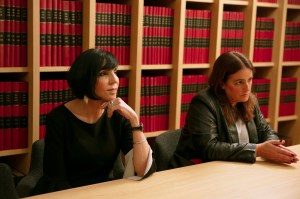
Agnes Landau and Mele Malero
Cheril Sanchez/WWD
Does it surprise you that products being developed by and for Latinas doesn’t motivate purchases?
Maria Salcedo: That warrants a bit more research to understand what that is. I think it has something to do with either being first-generation or being born here. At the end of the day, we just want to be a part of this country and recognize this part of the culture, and part of the social fabric. So, it’s kind of like that recognition versus another type of recognition that may happen in other ethnic or racial groups. When you say something is Black-founded, there’s much more of a for-us, by-us mentality. There’s not that same reaction with us.
Michelle Freyre: I have a hypothesis. We have inherently a culture about respect and authority, and the bigger brands that have been around for a long time may inspire more trust. If you’ve used them, if you’ve grown up with them, or if your mother used them — that carries a lot of weight for the Hispanic consumer specifically.
Teresa Lopez: On color cosmetics, we did a lot of research that always indicated this cohort wanted to be a part of the wider assortment, always wanted the choices of shade, wanted the choices of look. Not because they necessarily wanted to integrate, but because they didn’t want to be pigeonholed.
What does meaningful change look like?
Teresa Lopez: A seat at the table.
Agnes Landau: When we don’t need to have a conversation about it. When we don’t need a conversation about it, then we’ve gotten there. Nobody’s asking, “Hey, do white men need more representation?”
Teresa Lopez: There have been strides made, but it’s probably taking longer than it should.
Maria Salcedo: Because I guarantee we’re all pretty much lonely, where we are.
Marcela Melero: We already have relationships, bringing people in, and mentorship. But there is power in finding each other and building that. We talk a lot about the differences in Latinas, but we also have a lot of commonalities, and a superpower we need to unlock, together.
This post was originally published on this site be sure to check out more of their content.


